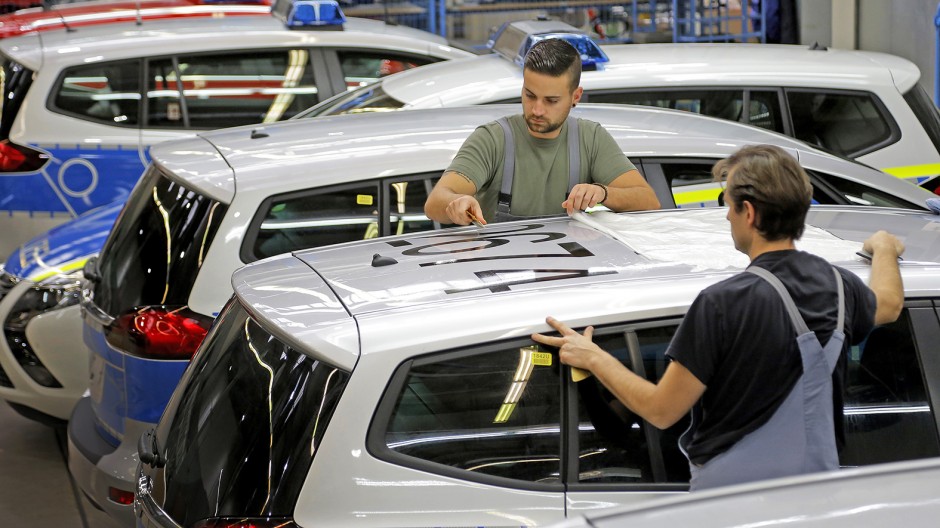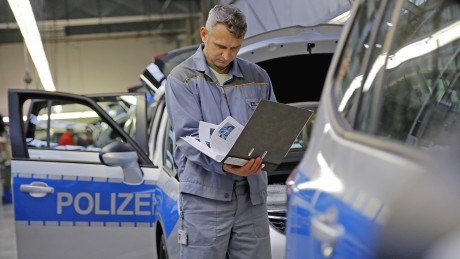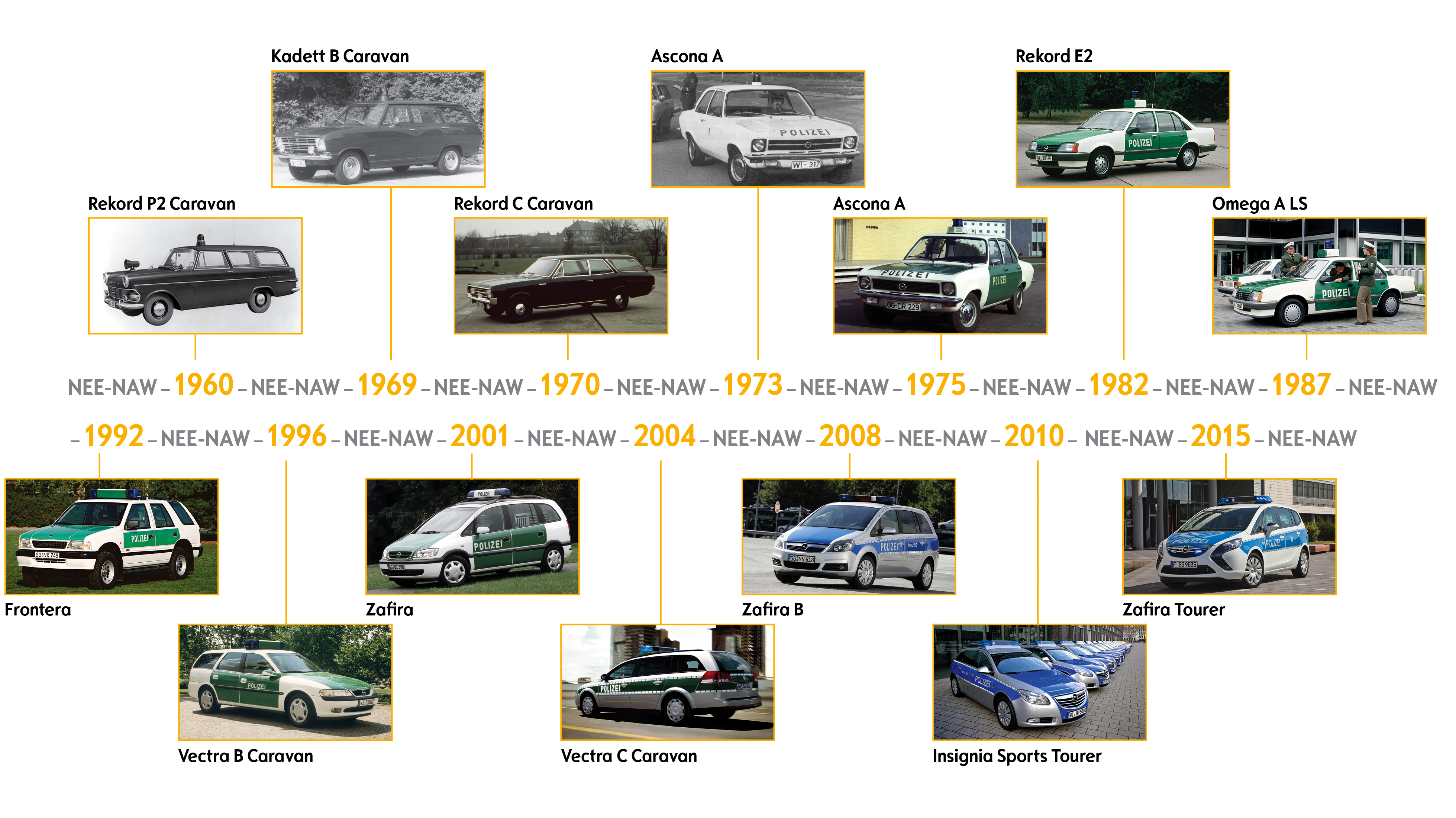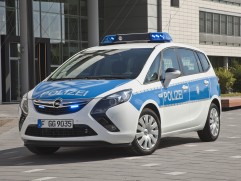
The first interactive police van: Opel showcased a Zafira Tourer at last year’s General Police Equipment Exhibition (GPEC) in Leipzig. The car has now become the top choice of the Brandenburg police force.
Marcel Gülicher takes a voltage tester at hand and leans far into the trunk of the Zafira Tourer. In the wells, in which a production vehicle provides the sixth and seventh seat, a dozen devices spread out in front of Gülicher: In the right cavity there is the main computer, behind a digital radio, and finaly there are three fuse blocks as well as a LAN box. In the left cavity Gülicher faces, among other things, an additional battery, an isolating relay and the master fuse. With a steady hand, the employee of Opel Special Vehicles (OSV) sets out to examine whether the voltage is applied to the fuse blocks. The set of prime technology in the tail makes the standard vehicle into a top-class patrol car, an interactive Zafira Tourer. 15 OSV employees are engaged with installations and fixtures at a small assembly line, four patrol cars are produced daily. With a total of 28 of these vehicles the police of Brandenburg state will be on the road soon. Thanks to its very fast LTE internet connection the police van allows the inmates to communicate in real time with the police control center and make the scheduling.
Zafira Tourer: the Fully Networked Police Cruiser
The heart of the built-in computer system is a multi-function PC with a touchscreen in the dashboard. Everything from task management and navigation to video capture via front and rear cameras can be controlled from the touch screen, which is also the user interface for police radios and the system for audible and visual police signals. The 28 Zafira Tourers for the Brandenburg state police are the first vans of this type ever ordered by a police force, but they’re definitely not the first vehicles that Opel has tailored to the needs of everyday police work.
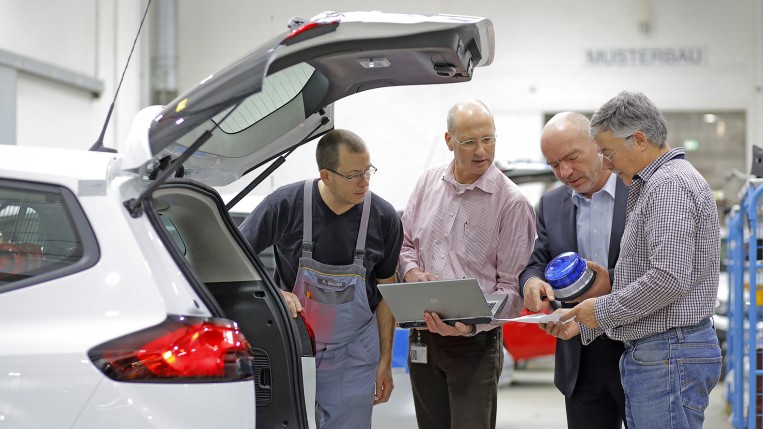
Close teamwork: Marcel Gülicher (employee at OSV Prototyping), Dieter Kuss (project engineer), Jens Weiprecht (Official Vehicle Sales), and Norbert Schumann (Head of OSV Prototyping) discussing how work on converting the stock vehicle is going.
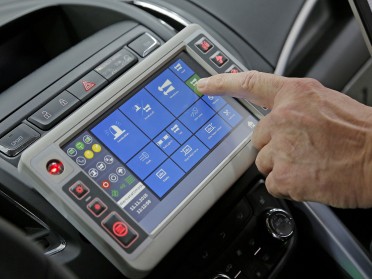
Heart of the interactive van: All police-specific applications can be operated using the touchscreen monitor.
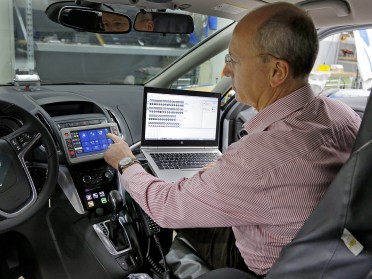
Interactive: The van is linked to police headquarters via UMTS/LTE. Dieter Kuss checks to make sure information is transferred within milliseconds.
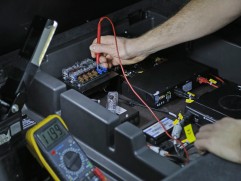
Technical equipment in the cargo area: Marcel Gülicher checks if they’re receiving power.
The specialists at OSV have modified some 1000 vehicles for Germany’s state and federal police force in 2015.
ITEZ DESIGNS, OSV DELIVERS
The patrol cars are developed by the experts at Opel’s international Development Center (ITEZ). The GME Conversions team specializes on performing upgrades on production vehicles, on innovative special equipment, and, of course, on customized solutions for official and special vehicles.
Engineer Dieter Kuss is in charge of overseeing police vehicles. “On the one hand, we focus on developing special equipment for the police. On the other hand, we are faced with the challenge of having to meet a wide variety of customer requests and implement them in a production model,” he says. “There’s always something exciting to do.” Issues related to the conversion have to be addressed in the planning phase. This includes questions like: Is the installed radio system compatible with the other electronic equipment in the vehicle and vice versa? Is the passenger compartment secure in case of a rollover? Where can the other required equipment, such as fire extinguishers and firearms lockers, be safely installed without endangering the vehicle occupants?
CONSTANTLY EXCHANGING INFORMATION IS PART OF THE KEY TO SUCCESS
The second step focuses on how to perform the conversion. This involves questions like how can they meet the needs of the customer while keeping costs low and doing so in an innovative way and, of course, how can the OSV employees carry out the planned modifications. “During the first practical phase involving building the model, the Conversions team works closely with the OSV employees in order to avoid future hurdles,” Dieter Kuss reports.
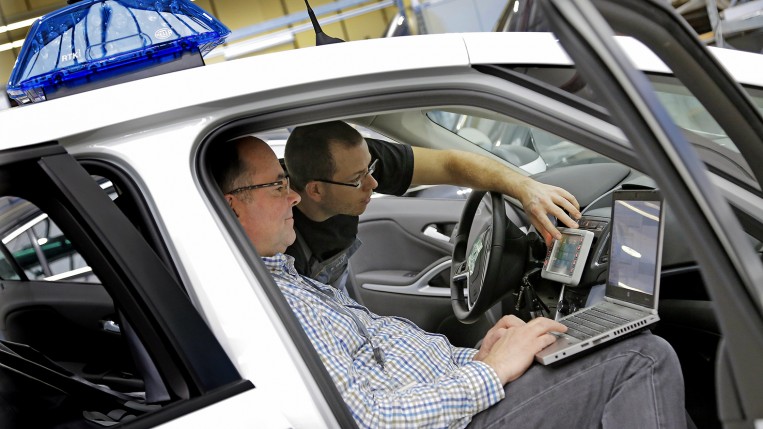
Marcel Gülicher from OSV prototyping and Bernhard Floeth, lead engineer for electrical and electronic systems, check the information transmission in the vehicle.
“It takes in-depth expertise and a lot of cables.”
– Norbert Schumann –
EDR: THE CAR’S BLACK BOX
Welcome to the prototype workshop in the M55 building. If you’ve ever seen a German police show on TV or been pulled over yourself, then you might be familiar with the messages displayed on top of police cars, like “Stop Police” or “Please pull over.” These words are displayed on LED screens that are installed on a lightbar for special signals. OSV installer Marcel Gülicher is currently installing one on a Corsa. The Berlin police department recently ordered several of these compact cars, which will soon be patrolling the streets of Germany’s capital.
“The lightbar weighs between 12 and 17 kilos, making it the heaviest component, but it’s not the most difficult part of the modification process,” says Norbert Schumann, head of prototyping and production for major accounts. Installing the event data recorder (EDR) is much more complex. An EDR is like the black box in an airplane; it records data such as vehicle speed or lighting system usage. This small device is installed under the driver’s seat. „We have to connect the EDR to the engine and all of the vehicle’s electrical and information systems,“ says Schumann. “It takes in-depth expertise and a lot of cables.”
Delivering Squad Cars for over 50 Years
Opel has been supplying vehicles to law enforcement departments for decades. Here’s a timeline of Opel police cars.
“The police want a fully networked vehicle and that’s what we deliver.”
– Ralf Reis –
A JOB FOR REAL EXPERTS
Most of the sets of cables used in Opel’s police car models are six to seven meters long. Installing them is a real challenge for the team at OSV. Take one look at the rear of the Zafira Tourer, and you’ll understand why. The digital radio system is installed on the floor of the trunk. Next to it is the vehicle’s second battery, which powers additional components such as the van’s lightbar or EDR. “The police want a fully networked vehicle and that’s what we deliver. Everything in it is much more complex than what you’d find in a normal car,” says Ralf Reis, who keeps track of workflows and bills of materials. “Properly installing all these cables in tight spaces like the A-pillar is a job for real experts.”
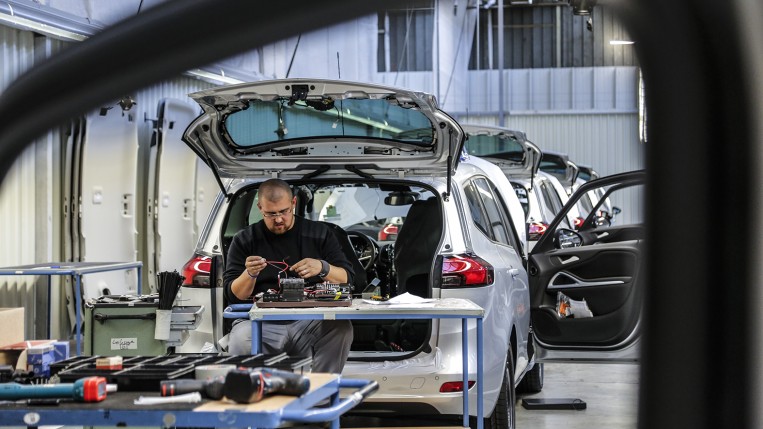
OSV has set up a small production line in Building M55, where the vehicles are retrofitted in series.
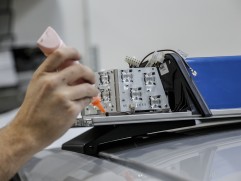
Threadlocker: The liquid adhesive ensures a secure fit of the screws.
The next stage of the retrofitting process begins in a different workshop after all the work steps and necessary materials have been identified. This is the small production line where the OSV team works on the vehicles. The orders vary. Some are for the federal, some for the state police. Some are for patrol cars, some are for unmarked cars with a detachable blue light system instead of a roof-mounted one, “more like what Kojak would drive,” says Ralf Reis. Up front, it’s all about dashboard modifications: mostly touch screens and chargers, and sometimes anti-theft devices or cameras. Partition grilles and protective coverings are installed in the back. The team also has to build compartments for special items like forensics kits or firearms lockers.

Marek Maslyk installs lights and cables for rear safety.
“We supply vehicles to the federal police and have framework agreements with regional police departments in North Rhine-Westphalia, Lower Saxony, Thuringia, Berlin, Brandenburg, and Hesse.”
– Jens Weiprecht –
“We always find a workable solution, whatever the requirement, and police departments appreciate that,” says Jens Weiprecht, Key Account Manager. “Police cars from Opel are growing in popularity, we deliver to the federal police and have framework agreements with regional police departments in North Rhine-Westphalia, Thuringia, Berlin, Brandenburg, and Hesse.” With the interactive Zafira Tourer, Opel is going one step further and offering a squad car with the latest technology, enabling the police to be more responsive than ever before. Weiprecht: “Yet another reason why more and more police departments are opting for reliable Opel models.”
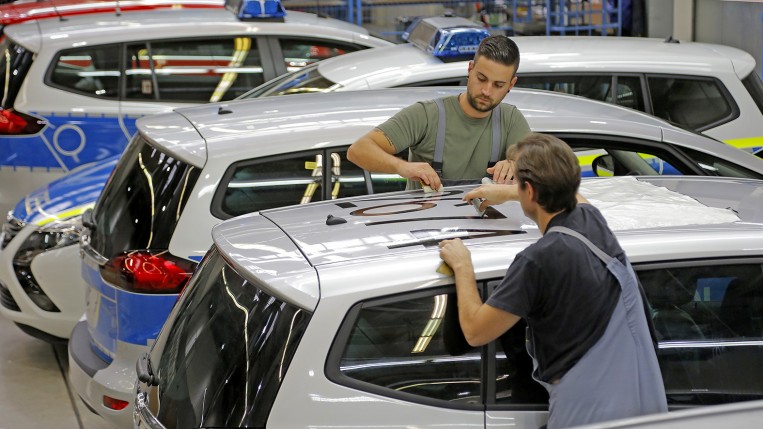
Teamwork: Michael Luy and Daniel Roessler paste the roof of the Zafira Tourer with the “aviator hand signals”. To be able to recognize the police vehicles from the air, an abbreviation is applied – it consists of the last four digits of the license plate and a code of the state.
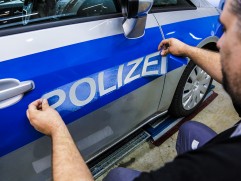
Markings: Patrick Sand adds the vinyl strips that identify the vehicle as a police car.
COMING SOON: OPEL POST GOES ON PATROL
After our tour of M55, we here at the Opel Post Editorial Office wanted more. So we asked the Frankfurt am Main police department whether one of their officers would take a writer and a photographer out on patrol so we could experience an Opel police car in action. They said yes. Stay tuned for more.
Last update: November 2015
